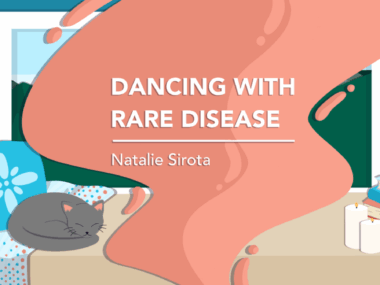My daughter’s long journey to a hereditary angioedema diagnosis
Searching for answers felt like navigating uncharted territory
Written by |

Before being diagnosed with hereditary angioedema (HAE) in 2019 at age 17, my adopted daughter, Leah, received several other rare diagnoses, none of which had any real targeted treatment. They caused symptoms, such as migraine, and other systemic reactions.
One diagnosis was postural orthostatic tachycardia syndrome, which was scary enough because Leah would randomly pass out. Her immunologist suggested saline infusions with intravenous Benadryl (diphenhydramine) and famotidine to help with vascular and gastrointestinal (GI) inflammation.
When these infusions became twice weekly, causing her veins to be overused, doctors suggested she have an access port placed. That required surgery and home nursing visits to professionally access her port.
Soon, her port also became overused and needed to be replaced with a central line. By this time, Leah was so frail and ill that she was mostly bedridden and required constant caregiving.
It wasn’t long before her GI symptoms became so bad that she wasn’t able to eat for almost a week and could barely drink water. Her gastroenterologist concluded that she needed to be hospitalized and have a feeding tube placed.
While the technicians were trying to place the feeding tube, Leah began having difficulty breathing and intimated that her throat was closing off. This was one of the most terrifying experiences to witness as a parent.
They removed the tube and stabilized her with another IV infusion cocktail, but we were still very confused as to what had happened. No one seemed able to figure out the cause of all these issues.
Finding answers
While I fully believe that everything happens for a reason, it was overwhelming when Leah’s immunologist left the practice and we couldn’t afford her private fees. We also lost the support of Leah’s pediatric gastroenterologist who was moving out of the area, though the doctor didn’t think that Leah’s problems stemmed from a GI issue.
Amid our frustrations, we were redirected to the owner and head doctor of a prominent immunologic research center in Denver. During our very first consultation, he said he might have an idea as to what was causing Leah’s health issues.
After some testing and blood work, he prescribed some other infusions before starting Leah on a trial of an IV medication for HAE. Within a month, Leah was feeling so much better that she was asking to have her central line removed!
We were so excited to have a diagnosis and treatment for these seemingly crazy vascular, GI, and throat swelling symptoms. This did mean, though, that we had to learn how to properly prepare and administer IV medication at home. It was rather trying at first, due to the refrigerated storage of the meds, sterile preparation needs, and planning involved. However, the fact that something was helping after years of suffering was huge!
Then came the insurance challenges. Everything was well and good for about a year — until it wasn’t. The insurance company wanted Leah to try other less expensive medications. This became another disaster. Over the next few months, she tried three different injectables that caused adverse reactions, thankfully at the doctor’s office. These hypersensitivity issues then ruled out the three other available HAE medications. Finally, after appeals and all the medication failures, the insurance company approved us for another year of the only treatment Leah could use at that time.
Today, even more is known about preventing attacks, and there are even some oral maintenance medications available. Since Leah was diagnosed, both her brother and I have also received different types of HAE diagnoses and are grateful to her for paving the way. We’re so thankful to live in these amazing times for rare disease innovations!
Note: Angioedema News is strictly a news and information website about the disease. It does not provide medical advice, diagnosis, or treatment. This content is not intended to be a substitute for professional medical advice, diagnosis, or treatment. Always seek the advice of your physician or other qualified health provider with any questions you may have regarding a medical condition. Never disregard professional medical advice or delay in seeking it because of something you have read on this website. The opinions expressed in this column are not those of Angioedema News or its parent company, Bionews, and are intended to spark discussion about issues pertaining to angioedema.






Leave a comment
Fill in the required fields to post. Your email address will not be published.